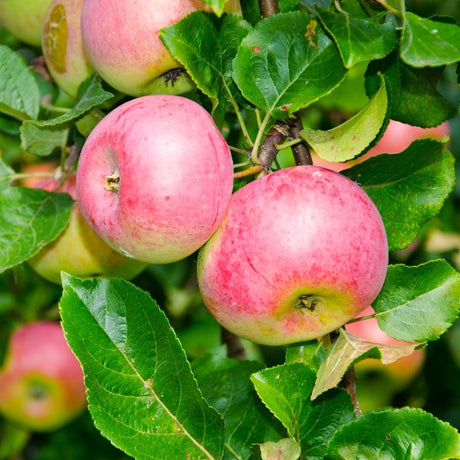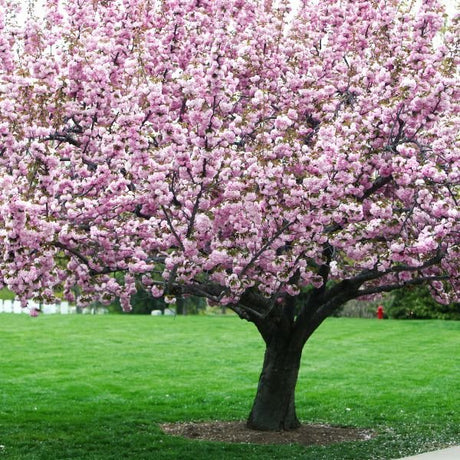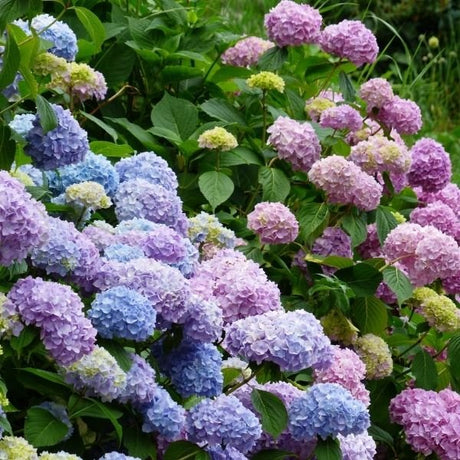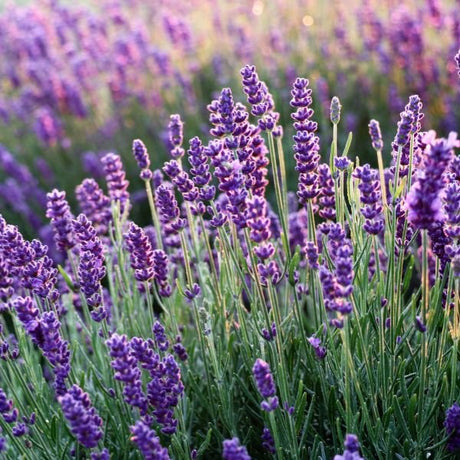American Cranberrybush Viburnum
Viburnum opulus var. americanum
- Stay Protected with Plant Sentry ™
American Cranberrybush Viburnum - #5 Container is backordered and will ship as soon as it is back in stock.
Plant Sentry™
Plant Sentry™
Plant Sentry is designed to protect both consumers and the nursery trade from invasive plant pests and diseases. Sites that display the Plant Sentry protection badge are protected from consumers buying and nurseries shipping material carrying invasive pests and diseases.
This proprietary eCommerce software prevents the shipment of a restricted plant to each state. The Plant Sentry system includes a shipment certification program. The Plant Sentry Compliance Officer works closely with NatureHills.com and each nursery or fulfillment center to ensure only compliant plants are sold to customers.
Click Here to learn more

Delivery and Shipping
Delivery and Shipping
Shipping
To obtain a more accurate shipment time-frame, simply enter your zip code in the “Find Your Growing Zone” box to the right. Our plants are grown all over the country and lead time on items may be different because of this. Once your order is placed, you will also receive the specific shipment time-frame information as part of your order confirmation. Once an item ships, you will receive shipment notification and tracking numbers, so you can follow along while your plant travels to your doorstep. We use FedEx, UPS, or USPS at our discretion.
Due to winter weather we have put a hold on shipping to the areas shown below in grey. You can still order now and we will ship the plant to you during an appropriate time for your zone.
Standard Shipping Rates
At Nature Hills we handle, package and ship the products you order with the utmost care to ensure healthy delivery. Shipping and handling charges are calculated based on the tables below. Please note that some items include an additional handling surcharge, these will be noted on the item's product page.
| From | To | S&H |
|---|---|---|
| $0 | $19.99 | $24.99 |
| $20 | $49.99 | $29.99 |
| $50 | $69.99 | $34.99 |
| $70 | $99.99 | $39.99 |
| $100 | $129.99 | $44.99 |
| $130 | $149.99 | $48.99 |
| $150 | $150+ | Approx 28% |
Click here to see our full rates
Understanding Plant Options
Nature Hills offers plants in two main formats:
- Container Plants: Grown in pots with soil, sized by container volume and plant age
- Bare Root Plants: Dormant plants without soil, sized by height measurements
Container Plant Sizes
Container sizes indicate plant age and growing capacity rather than liquid volume equivalents. Our containers follow industry-standard nursery "trade gallon" specifications, which differ from standard liquid gallon measurements.
Young Plants (6 months to 18 months old)
| Container Size | Actual Volume | Metric Equivalent |
|---|---|---|
| 2" x 2" x 3" | 0.18 - 0.21 dry quarts | 0.20 - 0.23 dry liters |
| 4" Container | 0.31 - 0.87 dry quarts | 0.35 - 0.96 dry liters |
| 4.5" Container | 0.65 dry quarts | 0.72 dry liters |
| 6" Container | 1.4 dry quarts | 1.59 dry liters |
| 1 Quart | 1 dry quart | 1.1 dry liters |
| 5.5" Container | 1.89 dry quarts | 2.08 dry liters |
Established Plants (18 months to 2.5 years old)
| Container Size | Actual Volume | Metric Equivalent |
|---|---|---|
| 2 Quart | 2 dry quarts | 2.2 dry liters |
| #1 Container | 2.26 - 3.73 dry quarts | 2.49 - 4.11 dry liters |
| 5" x 5" x 12" | 3.5 - 4.3 dry quarts | 3.85 - 4.74 dry liters |
Mature Plants (2-4 years old)
| Container Size | Actual Volume | Metric Equivalent |
|---|---|---|
| #2 Container | 1.19 - 1.76 dry gallons | 5.24 - 7.75 dry liters |
| #3 Container | 2.15 - 2.76 dry gallons | 8.14 - 12.16 dry liters |
Large Plants (3-5 years old)
| Container Size | Actual Volume | Metric Equivalent |
|---|---|---|
| #5 Container | 2.92 - 4.62 dry gallons | 12.86 - 20.35 dry liters |
| #6 Container | 5.25 - 6.01 dry gallons | 23.12 - 26.42 dry liters |
| #7 Container | 5.98 - 6.53 dry gallons | 26.34 - 28.76 dry liters |
Bare Root Plants
Bare root plants are sold by height from the root system to the top of the plant. Plants may exceed minimum height requirements.
Common Sizes:
- Trees: 1 foot, 2 feet, 3 feet, 4 feet, 5 feet, 6 feet
- Shrubs & Perennials: 1 foot, 18 inches, 2 feet
Important Notes
Container Volume Specifications
- Trade Gallon Standard: Our containers follow industry-standard "trade gallon" specifications established by the American National Standards Institute (ANSI Z60.1) for nursery stock
- Volume Variations: Actual soil volume may vary due to plant root systems and growing medium settlement
- Age Indicators: Container size primarily indicates plant age and maturity rather than liquid volume equivalents
Growing Conditions
- Plant size can vary based on variety and growing conditions
- Container size helps indicate plant maturity and establishment level
- Larger containers generally mean more established root systems and faster landscape establishment
Seasonal Availability
- Bare root plants are available seasonally when dormant
- Container plants are available throughout the growing season
- Specific varieties may have limited availability in certain sizes
Questions?
For questions about specific plant sizes or availability, please contact our plant experts who can help you choose the right size for your landscape needs.
Plant Highlights
American Cranberrybush Viburnum highlights at a glance!
Specifications
Specifications
-
Brand
-
Botanical Name
-
Growing Zones
-
Mature Height
-
Mature Spread
-
Sun ExposureFull Sun
-
Moisture
-
Soil
-
Growth RateMedium
-
Fall Color
-
Pollinator Friendly
-
Pollinator Required
-
Fragrant
-
Pruning Time
-
Bloom PeriodEarly Spring, Late Spring
-
Harvest Time
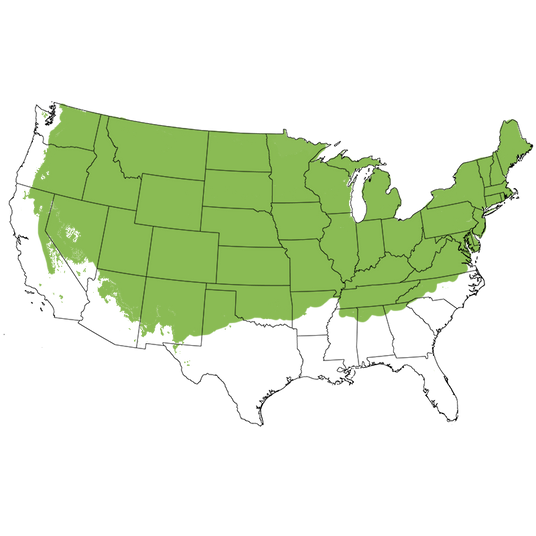
Growing Zones 2-7
American Cranberrybush (Viburnum opulus var. americanum (formerly Viburnum trilobum)) is a deciduous shrub that (although not related to the true cranberry commercially grown for food), provides both ornamental interest and an edible harvest. Choose one as a specimen plant or use several as they're also effective in small masses and borders.
American Cranberrybush has a spreading nature with dense foliage and a rounded habit. Your American Cranberrybush (also known as Highbush Cranberry), has a lot to offer. Round, flat flowerheads (consisting of tiny, white florets), and many pollinators, will adorn your Cranberrybush in spring. What a delightful herald to the upcoming summer season!
The flowers later give way to clusters of red berries that decoratively dangle from the bush in autumn. The lobed, dark green leaves are reminiscent of maple leaves and contribute to the American Cranberrybush's full, vibrant appearance. A purplish-red fall color completes this remarkable shrub's list of sterling attributes.
The red berries are edible directly from the bush (but very tart and acidic) and are often used in jams and jellies. They are also a particular draw for your yard's birds, as the berries tend to cling to the bush through the winter months. With optimal conditions, it can live up to 40 years! Even though birds and other wildlife will enjoy the dense foliage and fruit of your American Cranberry, more destructive wildlife, such as deer, tend to leave it alone.
Planting and Application:
Amazing flowers for pollinators, edible fruit for you and birds, and 3-season foliage color make the American Cranberrybush a truly remarkable shrub for the home landscape! Easy to care for, it has a multi-stemmed, upright spreading habit, and fills out right to the ground, so you won't need to couple it with facer plants.
Add as a specimen to light up your home, or soften a corner planting and enliven your home's foundation. Create a row of privacy between your front yard and the street, or as a screening division along your side and backyard to create garden rooms and seclusion. Create hedgerows and shelterbelts with these larger shrubs while slowing wind and drifting snow!
- Lacy Clusters of White Blooms
- Spring Flowers For Pollinators
- Edible Red Fruit, Bird-Friendly & Wildlife Interest
- Hardy Native With Colorful Foliage
- Incredible Fall Color
- Pollinators, Bird-Friendly, Screening, Specimen & Focal Point
#ProPlantTips for Care:
American Cranberrybush Viburnum prefers well-drained soils with more moisture than average but is a relatively hardy shrub overall. It will do well in both full sun or part shade, or even full shade (but you'll have fewer flowers and fruit in full shade). Water regularly to establish, but after these are resilient fruiting shrubs that can be drought tolerant, you'll have stronger growth and more fruiting when watering during summer and drought. Mulch the root system well with 3-4 inches of arborist bark chips, but be mindful not to allow them to pile up against the trunk.
Wait to prune until after those amazing flowers are finished in spring. It's rare to need to tip prune, but you can shorten up the ends of branches right after flowering if you'd like. You can also skip tip pruning and renewal prune only if you wish to have fruit for birds. Renewal prune removes the largest, thickest stems from the ground every few years. This will rejuvenate your shrub. Leave the young stems in place, which will flower nicely for you next spring.
- Full Sun & Partial Shade & Full Shade
- Highly Adaptable to Most Well-Drained Soil
- Easy Care - Prefers Moist Soil Types
- Deer Tend to Leave This Plant Alone - Juglone Tolerant
- Self-Pollinating, But Plant More Than One V. trilobum for Best Berry Production
Overall, the American Cranberrybush is an exceptional choice for a hardy shrub that presents ornamental interest, as well as provides a tasty fall treat for both yourself and your feathered friends. Buy yours today at Nature Hills!
Frequently Asked Questions
Does the American Cranberrybush Viburnum Produce Fruit?
American Cranberrybush Viburnums produce edible red fruit in the fall. For larger harvests, plant multiple V. trilobum bushes together.
Does American Cranberrybush Viburnum Bushes Spread?
The American Cranberrybush Viburnum creates small thickets by producing suckers. These are easily removed with annual pruning if they are not desired.
Do American Cranberrybush Shrubs Lose Their Leaves in Winter?
American Cranberrybush is a deciduous shrub that will drop its leaves each fall.
How tall is the American Cranberrybush Viburnum?
The mature size of the American Cranberrybush in optimal conditions is around 8-12 feet in height and width.
Will American Cranberrybush Viburnum grow in the shade?
This Viburnum needs to be planted in full shade and partial shade to achieve the strongest growth, best color, and flowering.
How do you care for a Viburnum Bush?
These are incredibly easy-care shrubs that need a sunny, moderately moist environment. Well-drained enriched soil and mulched beds are preferred.
What Shipping Options Do You Offer?
NatureHills.com works closely with our growers and nursery professionals to ensure we ship when it is most appropriate for your area. Our goal is to deliver the hardiest plants by avoiding extreme high and low temperatures. Check out our shipping schedule for more information and to learn our wills and won'ts when it comes to shipping plants. Find your Viburnum for sale here at NatureHills.com!





